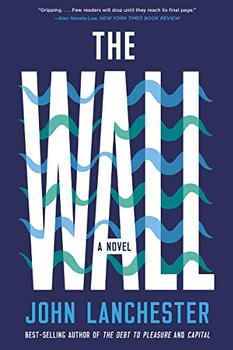Summary | Excerpt | Reading Guide | Reviews | Beyond the Book | Read-Alikes | Genres & Themes | Author Bio

This article relates to The Wall
 In John Lanchester's The Wall, protagonist Joseph Kavanagh is conscripted into military service to defend the titular wall against a breach by the "Others." The Others are not an invading army, however, but individuals displaced from their homes by some unnamed climate disaster. In the real world, as the effects of climate change become increasingly apparent and irreversible, it is not difficult to imagine a similar scenario in which areas of the Earth become virtually uninhabitable.
In John Lanchester's The Wall, protagonist Joseph Kavanagh is conscripted into military service to defend the titular wall against a breach by the "Others." The Others are not an invading army, however, but individuals displaced from their homes by some unnamed climate disaster. In the real world, as the effects of climate change become increasingly apparent and irreversible, it is not difficult to imagine a similar scenario in which areas of the Earth become virtually uninhabitable.
2017 was notably high in disasters that can be linked to climate change, including six hurricanes in the Atlantic, massive wildfires in the western U.S., and deadly record-breaking temperatures. The Internal Displacement Monitoring Centre cites a figure of more than 1.6 million Americans displaced from their homes as a result of these events, and things are likely to get worse. According to demographer Matthew Hauer at the University of Georgia, 13 million Americans will be displaced because of rises in sea-level by the year 2100.
In America, climate change will not look like a disaster movie, with desperate people fleeing a catastrophic event with only the clothes on their backs, but rather a steady shift driven by increasingly extreme temperatures. Individuals (and businesses) who are in the financial position to do so will gradually make their way to more comfortable environments, ensuring the poorest Americans are hit hardest by the effects of climate change. According to a study by the University of Chicago, the southern states of the U.S. will suffer an 8% loss of population by 2065, while the population of the western states will increase by 10%. Whole coastal towns in Alaska are seeking federal funds to relocate as the area becomes increasingly inhospitable due to storms resulting from melting sea ice.
It has also been widely reported that climate change is partly responsible for a surge in migrants from Central America (including El Salvador, Honduras and Guatemala) to the U.S. The area most affected is known as the "dry corridor," which stretches from Southern Mexico down to Panama and struggles with cycles of drought and flooding due to El Niño. Farmers suffering repeated crop failure flee to the United States seeking a more sustainable life. This fact is substantiated by a rise in the number of migrants due to climate-related events, such as the 2014 abundance of unaccompanied minors appearing on the border coinciding with a drought in the dry corridor.
Scientific American notes that the climate disasters of 2017 cost the country $11 billion, and stresses the need for cities to develop plans for accommodating more displaced individuals in the future. Former Department of the Interior official Joel Clement echoes concerns about the future: "As a country, we aren't set up to deal with slow-moving disasters...so people are on their own." With the decision by the Trump administration to withdraw from the Paris Agreement in 2015, it seems unlikely the federal government will begin working on climate change-related solutions anytime soon, so any plans to address these migration issues will have to be organized at the local level.
Image from earth.com
Filed under Nature and the Environment
![]() This "beyond the book article" relates to The Wall. It originally ran in March 2019 and has been updated for the
March 2020 paperback edition.
Go to magazine.
This "beyond the book article" relates to The Wall. It originally ran in March 2019 and has been updated for the
March 2020 paperback edition.
Go to magazine.
Finishing second in the Olympics gets you silver. Finishing second in politics gets you oblivion.
Click Here to find out who said this, as well as discovering other famous literary quotes!
Your guide toexceptional books
BookBrowse seeks out and recommends the best in contemporary fiction and nonfiction—books that not only engage and entertain but also deepen our understanding of ourselves and the world around us.